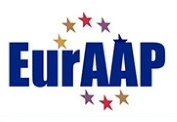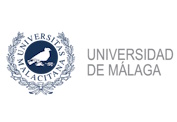Understanding and Shaping the Role of In-Network Computing for 6G Networks
Wednesday, 4 June 2025, 11:00 – 12:30, room 1.F
Session Chair:
- Susanna Schwarzmann (Huawei, DE)
- Aryan Kaushik Manchester (Metropolitan Univ.,UK)
- Riccardo Guerzoni (Docomo Euro-labs, DE)
- Antonio Iera (Univ. of Calabria, IT)
- Laki Sandor (ELTE Eötvös Loránd University)
- Andreas Müller (Bosch)
- Diego Lopez (Telefónica)
- Frank Fitzek (TU Dresden)
- David Gonzalez G. (Continental Automotive Technologies GmbH)
This Special Session is a joint initiative from the Working Item 207 (WI207) on “In-Network Computing and Intelligent User Plane” within the one6G association. WI207 elaborates how In-Network Computing (INC) can enable Net4AI and how it can support applications like AR/VR or robotics. This also includes discussions on how INC, as a promising enabling technology, can be integral part of the 6G networking architecture. The WI rapporteur is DOCOMO Euro-labs, WI supporters include CNIT, NTNU Trondheim, University of Thessaly, University of Aveiro, KCL, and Huawei.
The concept of In-Network Computing describes the capability of communication networks to integrate computation besides providing communication services. Network nodes are capable of carrying out computations on the data packets while forwarding them. INC has garnered considerable relevance in the past decade. Among others, this is due to the significant performance improvements INC can bring to applications. This applies in particular to latency-critical applications, like the control of robots deployed in smart factories or the decision-making of autonomous vehicles. Besides, INC can support the light-weight design of end-user equipment, like AR/VR glasses, because energy- and compute-intensive tasks can be offloaded to the network. INC can further be an essential enabler for other 6G features, as per IMT-2030 requirements, e.g., sensing and AI, for which computing is a pre-requisite. Several research associations, chip manufacturers, mobile network operators, and standardization development organizations, such as the IETF/IRTF and ETSI, hype INC as a potential key enabling technology for future networks. This suggests that the ongoing advancements on INC can have a huge relevance for 6G. At this stage, academic research already provides solid solution outlines, which now need to be bridged with the requirements on 6G from industry sectors and network operators. This Special Session shall provide a common venue for renowned experts from industry and academia to collect their latest insights and consolidate existing concepts. The key goal of the Special Session is to understand and shape the role of INC and to jointly define its scope in 6G. There is no better point in time than now, given the first 3GPP SA2 Study Item for 6G architecture to start in June, with the goal to have the scope finalized by end of this year.
Program:
11:00 – 11:05: Introduction and welcome
11:05 – 11:15: one6G WI207: Overview, Goals, and Ongoing Activities – Susanna Schwarzmann, Huawei, Aryan Kaushik, Manchester Metropolitan University, Riccardo Guerzoni, Docomo Euro-labs , Antonio Iera, University of Calabria
11:15 – 12:00: Insights on In-Network Computing for 6G: Academic and Industrial Perspectives
- Unified Data Plane Layer for Next Generation Network Infrastructures, Laki Sandor, ELTE Eötvös Loránd University, Budapest, Hungary
- In-Network Computing for Massive Digital Twinning and Agentic AI in 6G, Andreas Müller, Bosch
- Data Flow Trust and Governance in Support of INC, Diego Lopez, Telefónica
12:00 – 12:25: Panel
- Frank Fitzek, TU Dresden
- David Gonzalez G., Continental Automotive Technologies GmbH
- Andreas Müller, Bosch
- Diego Lopez (Telefónica)
12:25 – 12:30: Conclusions and wrap-up








